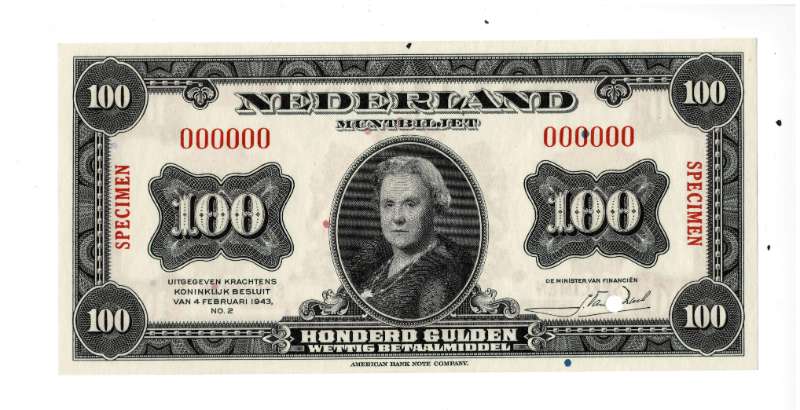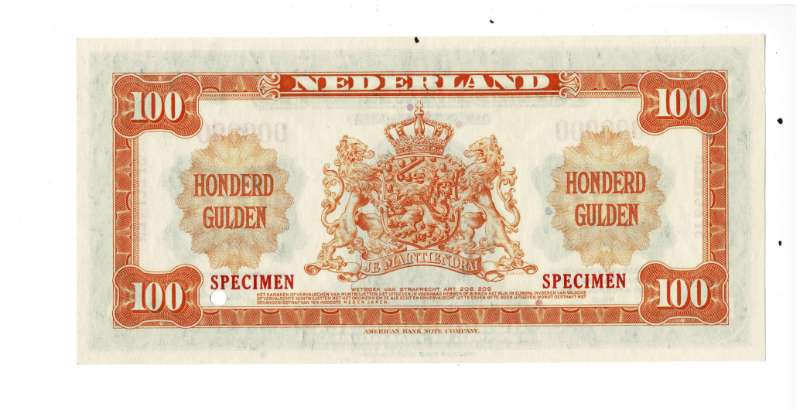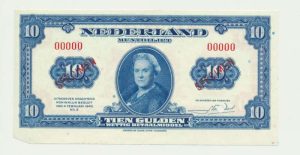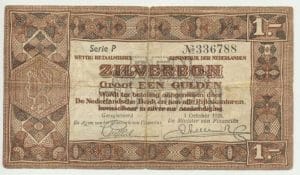Netherlands 100 Guilder 1943 Wilhelmina Specimen
NVMH:118
€ 695,00
Uitverkocht
Aanvullende informatie
| Weight | 0,025 kg |
|---|---|
| Quality | |
| Type | |
| Country | |
| Banknote value | |
| Delcampe id |
Beschrijving
Netherlands 100 Guilder 1943 Wilhelmina Specimen
NVMH:118
Plomp:PL98.s2.a
During World War II, the Allies were already preparing in 1943 for the invasion that would take place in 1944. The hundred guilder coin bill with Queen Wilhelmina on it is therefore part of a special piece of Dutch history. When liberating areas, the soldiers also had to be given money to spend in liberated areas, because it was difficult to issue foreign money in areas where the rate of that money was not known and many inhabitants did not know the money and probably would not accept it. Therefore, it was decided by the Ministry of Finance to print Dutch guilders in the United States, and these coin bills therefore had the image of Queen Wilhelmina on the front. The hundred guilder coin bill was signed by Johannes van den Broek (Minister of Finance). In addition to the hundred guilder coin bill, the following bills are also included with the series printed in the united states:
– One guilder coin bill Wilhelmina 1943;
– Two and a half guilder coin bill 1943
– Ten guilder coin bill 1943;
– Twenty-five guilder coin bill 1943;
– Fifty guilder coin bill 1943
Because the 1943 coin bills had already been issued before the liberation of the Northern Netherlands, some of them also ended up in the black money circuit of the occupied territory, so the series was withdrawn from circulation during the 1945 money purge.
Specimen banknotes Netherlands
Specimen banknotes are real banknotes that have been invalidated in the printing process. There are often several reasons for this. Specimen banknotes were often sent as sample bills to various banks so that staff could see what the new bills looked like and what the security features were. Also, specimen bills were often used as a test bill so that the client could inform the printing company about the quality of the bill and whether the bill could then actually be printed in larger numbers.
Because the numbers of specimen notes associated with a design are often much smaller than the regular bills of the design, the different types of specimen bills are not included in every catalog. Except in the Plomp catalog, which describes virtually every specimen bill of the Netherlands. Because specimen bills were not intended for circulation, they were eventually sent back to the printer or destroyed, and only a small portion remains today.
See scans for more details.
For questions feel free to send us a message.
Aanvullende informatie
| Weight | 0,025 kg |
|---|---|
| Quality | |
| Type | |
| Country | |
| Banknote value | |
| Delcampe id |





